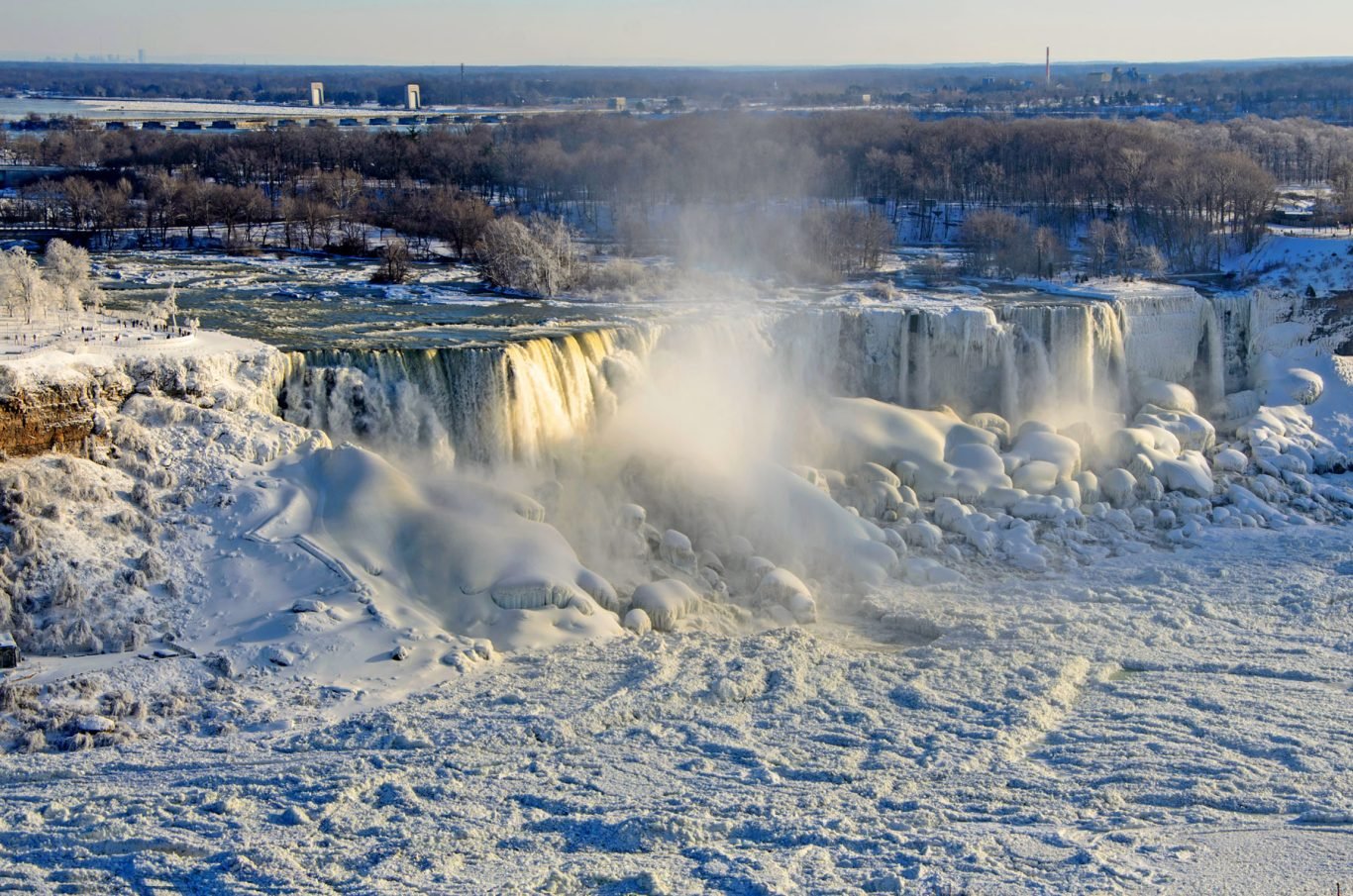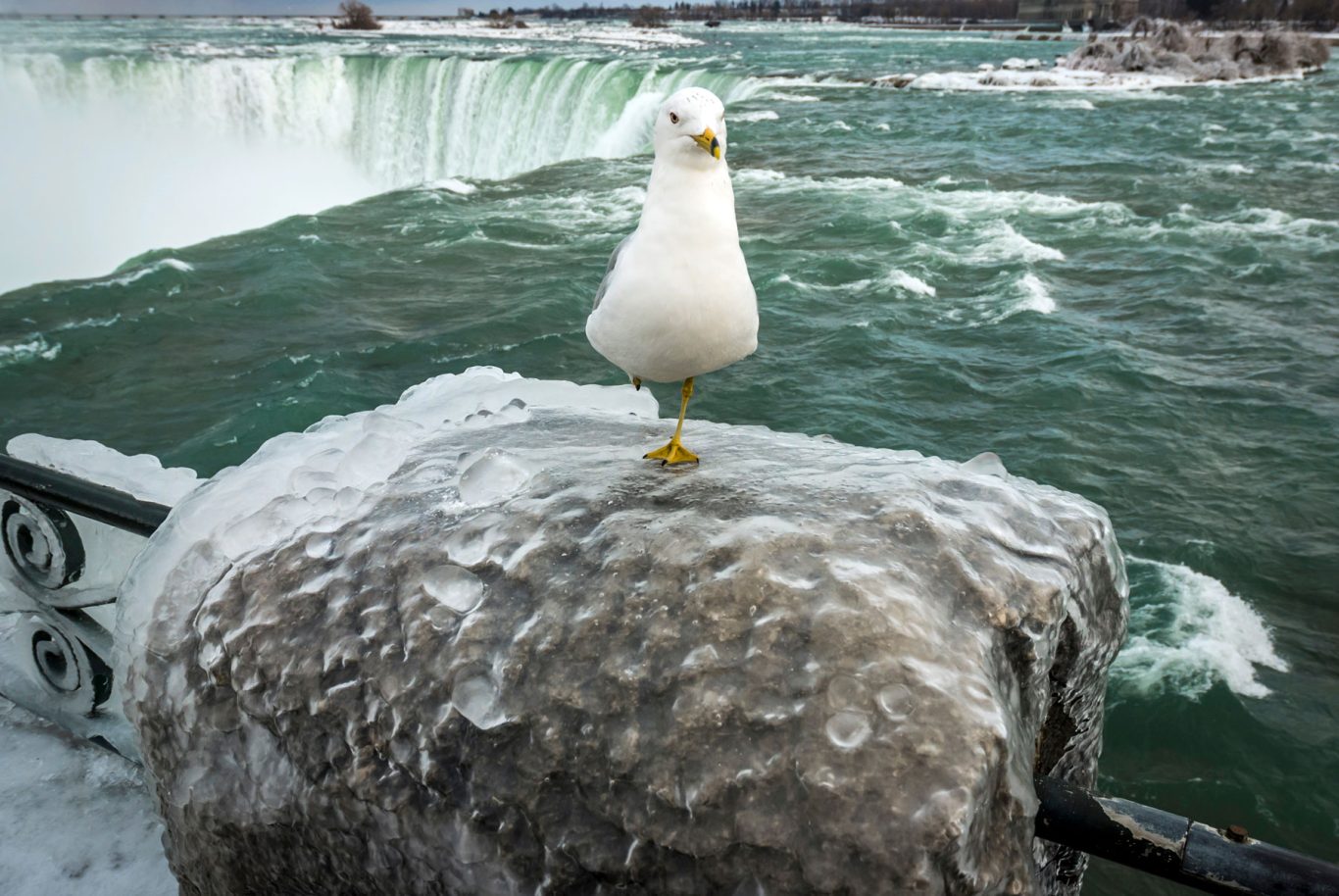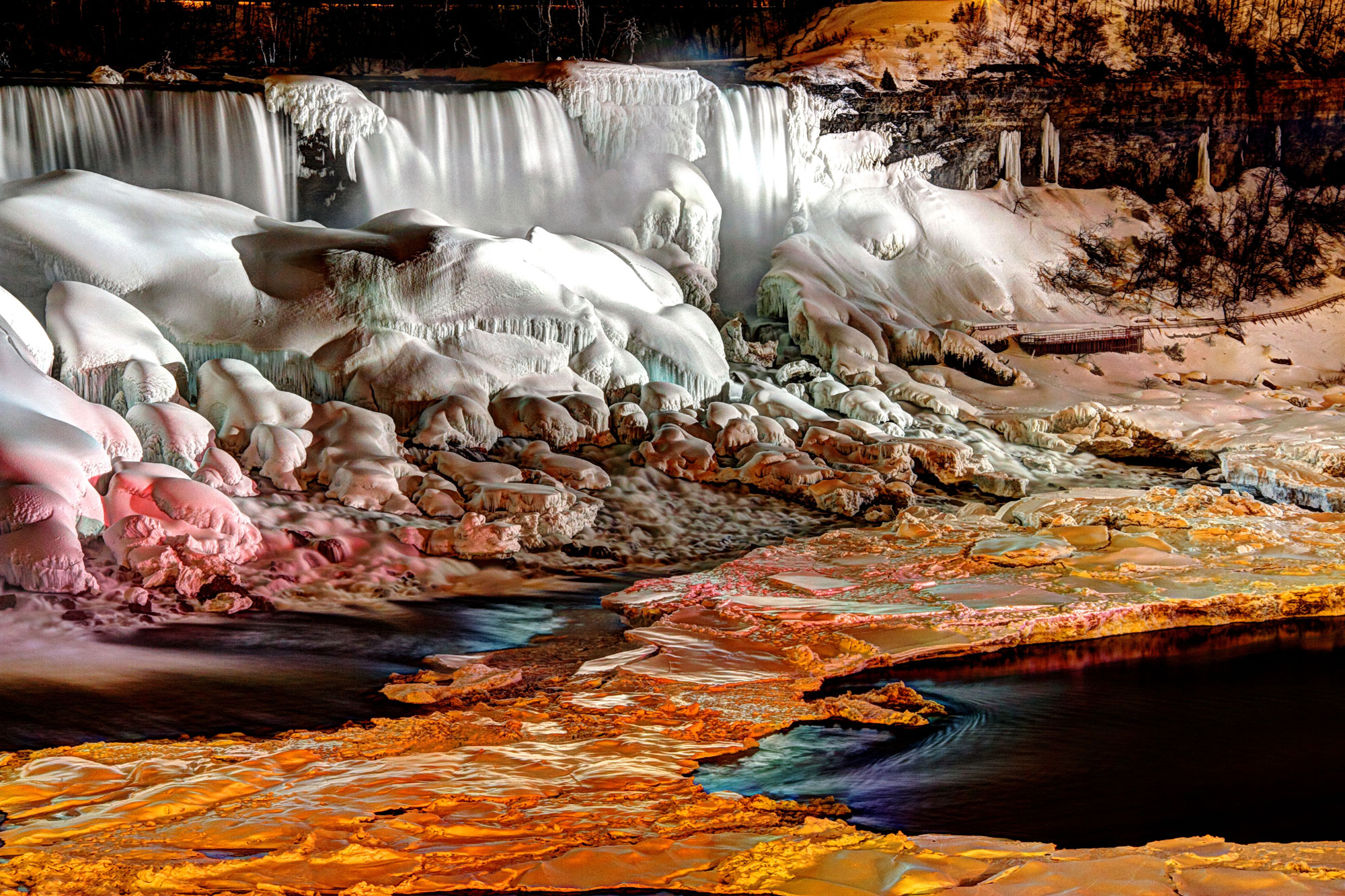The Winter Magic of Niagara Falls
Niagara Falls is a year-round destination, but winter transforms it into a breathtaking icy spectacle. The freezing temperatures create a frozen wonderland, where mist from the cascading water crystallizes on surrounding trees, railings, and walkways. While the falls themselves rarely freeze completely, the ice formations along the edges and the snow-covered landscapes make for a mesmerizing sight.
Clifton Hill, located just steps from the Falls, serves as the perfect hub for experiencing this seasonal magic. After marveling at the frozen beauty of Niagara Falls, visitors can warm up with a variety of indoor attractions, dining options, and entertainment along the bustling strip. From cozy cafes to family-friendly activities, Clifton Hill offers a welcoming retreat from the chilly outdoors.
The Historical Frozen Falls of 1848
One of the most remarkable moments in Niagara Falls’ history occurred in March 1848, when a severe cold snap and powerful winds caused ice fields from Lake Erie to block the Niagara River’s flow. For an astonishing 30 hours, the falls came to a frozen standstill, creating a glistening icy cascade. People even walked across the basin, ice-skated, and rode horses over the frozen surface. However, such a complete freeze is incredibly rare and unlikely to happen again due to the immense volume of water that flows over the falls today.
The Unlikelihood of a Complete Freeze
While the 1848 freeze captured imaginations, a complete freeze of Niagara Falls is highly improbable. Even in winter, approximately 20 million gallons of water rush over the falls every minute. About 75% of the water from Lake Erie is diverted for hydroelectric power, but the remaining flow generates enough kinetic energy to prevent a full freeze. While the falls may appear frozen at the edges, the water continues to flow beneath the icy surface.
The Role of Mist and Spray in Creating the Frozen Illusion
Though the Falls themselves don’t freeze entirely, the mist and spray they generate create a stunning frozen illusion. As the mist settles on nearby trees, rocks, and railings, it forms intricate ice formations and icicles. This icy blanket transforms the landscape into a winter wonderland, offering a picturesque scene for visitors.
The Spectacle of the American Falls
For the best views of the frozen effect, the American Falls are a must-see. With less water volume than the Horseshoe Falls, the American Falls are more likely to showcase icicles and frozen mist. Prospect Point, with its observation deck, provides an excellent vantage point to witness this icy spectacle up close.
The Ice Boom: Preventing Historic Blockages
To prevent ice blockages like the one in 1848, an innovative solution called the “ice boom” was introduced in 1964. This 1.7-mile-long floating barrier, made of steel pontoons, is placed at the source of the Niagara River. It controls ice movement, ensuring a steady flow of water and protecting the falls’ ecosystem and local infrastructure.

Capturing the Frozen Falls Experience
For photographers and nature enthusiasts, winter at Niagara Falls is a dream come true. Popular spots like Queen Victoria Park and Table Rock on the Canadian side, or Prospect Point and Cave of the Winds on the American side, offer stunning views of the icy landscape. The snow-covered trees and shimmering icicles create a magical backdrop for unforgettable photos.
Exploring Niagara Parks in Winter
Niagara Parks is a haven for winter explorers. Beyond the frozen Falls, visitors can enjoy guided tours, scenic walks, and educational programs about the area’s history and geology. The well-maintained paths provide safe access to breathtaking viewpoints, making it easy to experience the falls’ winter beauty.
Safety Precautions and Guidelines
While the frozen falls are a sight to behold, winter conditions require caution. Dress in warm layers, wear sturdy footwear with good traction, and be mindful of slippery surfaces. Respect any barriers or closures to ensure your safety and the preservation of this natural wonder

The Unforgettable Magic of the Frozen Falls
The frozen Falls of Niagara are a testament to nature’s power and beauty. While a complete freeze is rare, the icy formations, frozen mist, and shimmering landscapes create a magical experience that leaves visitors in awe. Whether you’re capturing photos or simply soaking in the views, the frozen falls are a winter wonder you won’t soon forget.
Plan Your Frozen Falls Adventure
When planning a winter visit to Niagara Falls, it’s essential to dress warmly and be prepared for icy conditions. The combination of cold temperatures and the ever-present mist can make pathways slippery, so checking the weather and dressing appropriately is key. To enhance your experience, consider visiting on weekdays or early mornings to avoid crowds. Researching available tours, activities, and accommodations in advance will help you make the most of your visit. With the right preparations, witnessing the frozen beauty of Niagara Falls is an unforgettable experience that showcases the power and splendor of nature in its winter attire.
Niagara Falls, with its Frozen Falls phenomenon, is a testament to the power and resilience of nature in winter. From the historical freezes of the past to the awe-inspiring icy illusions of the present, the Falls continue to captivate and inspire visitors from around the world. While a complete freeze may be a rare occurrence, the allure of the Frozen Falls lies in the enchanting scenes they create. Embrace the magic, explore the surrounding winter wonderland, and let the Frozen Falls of Niagara leave an indelible mark on your soul.

AAA released a photograph of the falls frozen over. I saw one when taking care of my elderly friend. It was cool! A couple of post cards too.